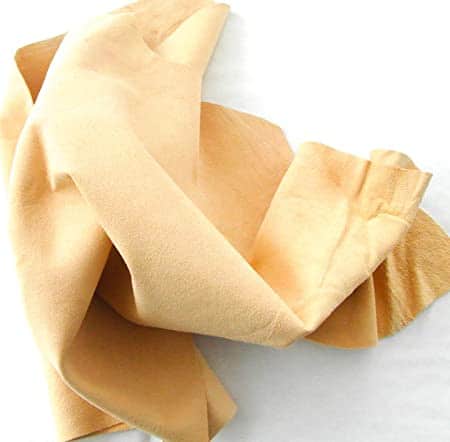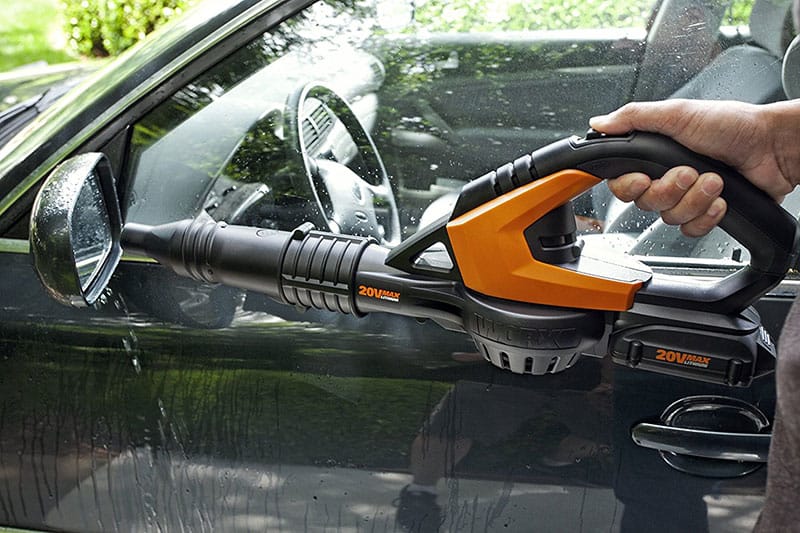Whilst drying your car may seem like a simple, straight forward, risk free and incidental process, it’s actually much more important than you think. Lots of people wash their car and simply dismiss the drying stage, this can steal your car of it’s best looks. If you have a dark coloured car, failing to dry it properly after washing will result in some displeasing looks. You’ll end up with water spots, streaks and deposits – not a good look.
Follow our simple guide below and your car will consistently look it’s best after being treated to a bath.
What Should I Use To Dry My Car?
The most important step of drying your car is actually the wash part of process, it’s really important that you get the car completely clean before attempting to dry it, irrespective of what you choose to dry it with.
If there’s some dirt or mud left on your car and you drag that across the paintwork using a drying towel, chamois etc, you’re almost certain to cause swirl marks or worse, deep scratches. Ensure that that is completely clean before attempting to dry and if you’re in doubt, give it a quick once over again before moving on to the drying stage. Below, we outline a few different options for drying
- A Microfiber drying towel

Our go to weapon of choice when drying a car. In our opinion, this is the safest and most effective way of drying your pride and joy after washing.
The construction of the microfiber drying towel means that they are pretty much risk free. They are extremely absorbent (helpful when trying to dry a car!), they are comprised of small, durable fibers which won’t inflict scratches or swirl marks on your paint when using them.
The first step is actually to wet your drying towel. Whilst that may seem counter intuitive, it’s actually a really important step. Using a bone dry towel will create friction which will result in fibers being left on your paintwork. Wet your drying towel, wring it out and begin drying your car with it. Pat your towel against the surface of the car, dragging it downwards to remove as much standing water as possible. Work from the top downwards. You’ll quickly notice when your towel is full of water and is struggling to absorb any more water, at this point, thoroughly wring it out and move on to your next panel.
Repeat the steps above until you’ve covered the entire car. You may notice that some panels still have small amounts of water left on them, go back over with the towel to dry it. You don’t want to leave this water on the car as when left to sit, the minerals from the water will leave marks on the paint and can potentially inflict damage.
2. Chamois

A chamois is probably the longest standing method of drying a car. They’ve been around for many years and are made from sheep or goat leather. They are absorbent, soft and completely non-abbraisive which means that won’t inflict scratches.
Be aware that there are synthetic chamois cloth’s available, we advise to steer clear of these as they aren’t comprised of the same materials and don’t deliver the same results.
When using your chamois, start wetting it and wringing it out. Never ever use a chamois cloth dry, always use a damp one.
Begin at the top of the vehicle and work your way down. Place your chamois over a flat part of the panel and gently pull it down towards you trying to grab as much water as possible. When your chamois is full and can’t absorb any more water, wring it out and go again.
Repeat the steps above until the vehicle is completely dry. As above, don’t leave any standing water on the car, go back over it a few times if neccesary.
3. Air Drying

Bare with us here, we appreciate this may seem like a crazy idea to some people. The most ardent of detailing fans amongst us will already be well aware of the benefits of air drying your pride and dry.
Air drying a car completely removes the possibility of inflicting damage on your paintwork such as swirl marks or scratches as it is completely contact-free.
A huge benefit of air drying your car is that you get access to all the nooks and crannies that you simply can’t access with a driving towel (panel gaps, inbetween badges etc)
There are a range of different air drying machines available, and if you don’t mind the neighbours giving you strange looks, you can even use a leaf blower, yes… a leaf blower.
Can I Really Use A Leaf Blower To Dry My Car?

Yes, yes you can. Whilst this may seem like a crazy idea, it’s actually really well suited. A traditional leaf blower is nowhere near powerful enough to inflict any damage to the car, but completely sufficient for drying the car after a wash.
What Happens If I Don’t Dry My Car After Washing?
If you don’t dry your car properly after washing it, you’ll end up with nasty water marks all over the paintwork and more importantly, the minerals from the water could potentially damage the paintwork.
If you’ve spent a lot of time washing your car and making it look nice and clean again, it makes sense to dry it and finish the job off properly. A car that’s been washed but then left to sit in the sunshine without being dried afterwards isn’t a pleasant sight, you’ll end up with tonnes of water marks and streaks all over the paintwork.
